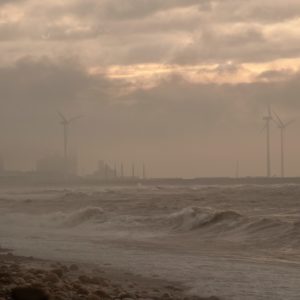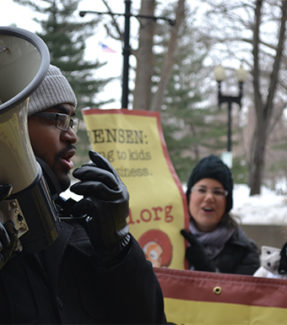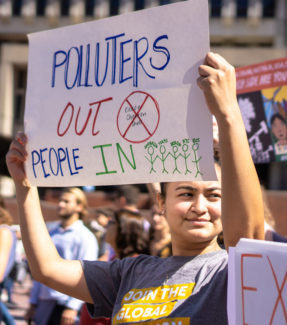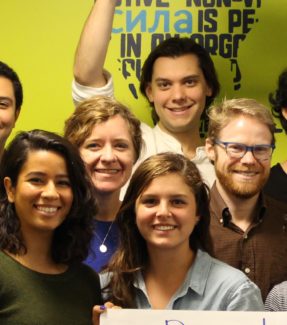Photo by Witch Kiki on Unsplash
What does the Great Pacific Garbage Patch have in common with the water crisis in Flint, Michigan? These two entities might seem unrelated, but they can be linked via the bottled water industry.
Water, the planet’s most precious natural resource, is threatened every day. From our taps to our oceans and everywhere in between, corporations attempt to pollute it, privatize it, and profit from it. On World Oceans Day this year, join me for a dive into how water issues around the globe are all connected.
What is World Oceans Day?
The Canadian government first proposed the concept of World Oceans Day in 1992 at the Rio de Janeiro Earth Summit. In 2008, the United Nations officially designated June 8 as World Oceans Day.
Why the fuss? The ocean plays a huge role in weather, air quality, food for marine life and people, and freshwater for the entire globe. In concert with the atmosphere, the ocean currents act as conveyor belts moving warm and cool water around the planet, distributing and stabilizing temperatures both on land and in the sea. The ocean water is constantly evaporating into the sky and coming down as rain or snow to fill lakes and rivers while replenishing groundwater throughout the world.
Pollution of the ocean comes in many forms: burning of fossil fuels acidifies the ocean as it absorbs carbon emissions, trash dumping and agricultural production dump run-off into our seas, and commercial ships cause noise pollution. All of this pollution affects the chemical makeup of the ocean, throwing the global ecosystem out of balance.
Focus on plastic pollution: single-use water bottles
This year, The Ocean Project, which organizes World Oceans Day, is focusing on preventing plastic pollution. From production to disposal, plastic harms our planet and creates tons of waste globally. There is even an ever-growing collection of marine debris made predominantly of plastic in the North Pacific Ocean called the Great Pacific Garbage Patch.
Plastic bottles are made of crude oil that is harvested, cleaned, processed, transported, and finally shaped into water bottles. They’re rarely made from previously recycled plastic: The process to recycle a bottle back into food grade plastic is expensive, so most bottling companies choose to maximize profit and use virgin materials (read: more oil, more plastic) for their bottles.
Finally, less than 25 percent of plastic water bottles are recycled. When plastic is not recycled into other plastics or broken down and blended with other materials, it ends up in landfills or dumped in the ocean. A plastic bottle could take up the 450 years to break down. But even at a faster rate, that plastic is leaching toxic chemicals into the ocean. These chemicals disrupt the ocean’s composition and balance, harming its ability to be such a life-giving force.
The bottled water industry and the struggle for water justice
Nestlé is one of the largest bottled water corporations in the world. Chances are, if you visited the Great Pacific Garbage Patch (not that you’d want to), you’d find Nestlé’s familiar brands like Poland Spring, Pure Life, and Ice Mountain swimming in the plastic soup.
Where does Nestlé get the water it bottles? Many places — including central Michigan where it pumps groundwater from a well for a mere $200 per year. And in early April, the state approved an increase in the volume of water Nestlé can pump from 250 gallons per minute up to 400 gallons per minute — for no additional fee! Michigan Citizens for Water Conservation attributes “significant loss of surface waters and aquatic life” in creeks near the well to Nestlé’s extraction. This volume of water retrieval is simply unsustainable for the local ecosystem.
Meanwhile, just 125 miles away, the people of Flint are still in the midst of a water crisis. It’s been more than four years.
After Flint’s water supply was changed to the heavily polluted Flint River in April 2014, the ensuing health crisis from lead poisoning forced residents to rely exclusively on bottled water for their everyday needs.
The decision to change the water source, which has left Flint with permanently corroded water pipes, was made without accountability to or approval from the city council — or any leadership in Flint. Instead, the emergency manager, a CEO-like figure appointed by the state, called the shots and enacted the switch without the necessary checkpoints to deem it safe. Not only did this leadership system strip away democracy for Flint residents, it also set up conditions that private water companies — like Nestlé — could profit from.
In fact, even after the water supply was switched back to a cleaner source, the old residential water pipes that were corroded by the polluted water from the Flint River continue to leach lead. Since 2014, the people of Flint have had poisoned water flowing through the pipes in their homes that they have not been able to use for anything besides flushing the toilet. What’s worse, many residents have become unable to pay their water bills, which have climbed to among the highest in the country — for poisoned water. The city has begun shutting off these residents’ water supply, furthering the human rights crisis.
Governor Snyder ended the state-sponsored free bottled water program in April 2018. But still, four years after the fateful switch to the Flint River, the people of Flint do not have access to clean water from their taps.
Since January 2016, the bottled water was supplied by the state at no charge to the citizens of Flint. Now at the end of the free water program, Nestlé announced that it will donate 1.6 million bottles through Labor Day. But we’re not fooled. Nestlé continues to profit from the bottling of public water. And while residents of Flint continue to organize for water justice, Nestlé’s bottles pollute our oceans and fill its corporate coffers with profit.
Take action to protect our most precious resource
From our oceans to our taps, one thing is clear: Water, our human right and most precious natural resource, is worth protecting. This World Oceans Day, join with people campaigning to protect the essence of life — on our coasts, out in the Pacific Ocean, and in Flint.




